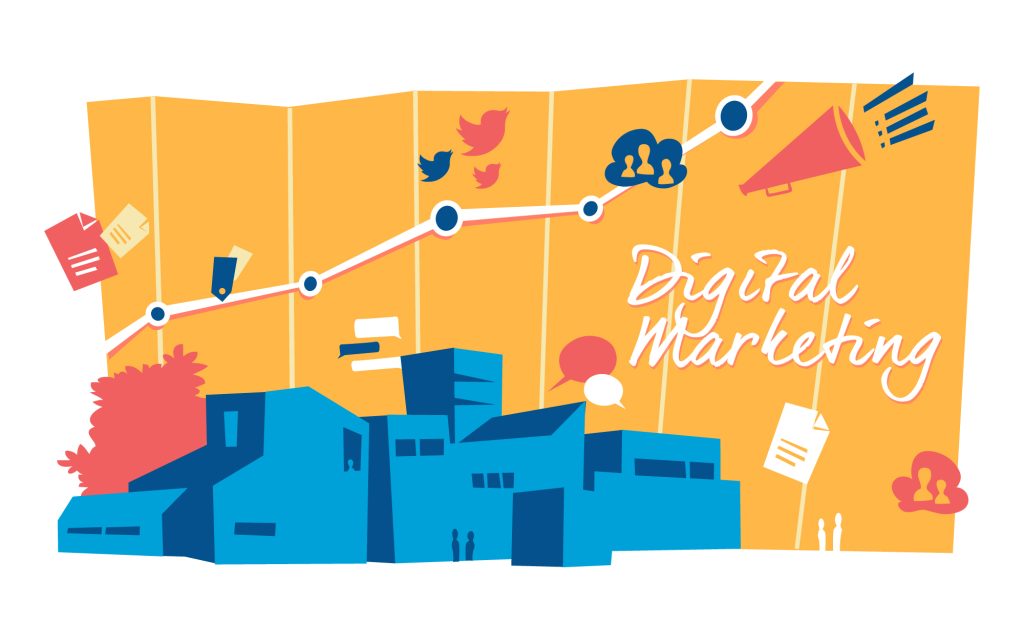Content Marketing
Content marketing is a strategic approach focused on creating and distributing valuable, relevant, and consistent content to attract and engage a clearly defined audience. The primary objective of content marketing is to drive profitable customer action. In today’s digital landscape, where consumers are inundated with information from myriad sources, effective content marketing plays a crucial role in distinguishing a brand from its competitors.
The significance of content marketing lies in its ability to foster relationships with potential customers through meaningful engagement. By providing informative and beneficial content, brands can establish authority in their niche, thereby enhancing trust among their audience. This, in turn, influences consumer behavior, leading to enhanced loyalty and repeated business. Brands that prioritize content marketing are better positioned to adapt to changing customer needs and industry dynamics, ensuring long-term sustainability and growth.
Strategically aligning content marketing efforts with a brand’s goals is essential for success. This involves identifying the target audience, understanding their preferences, and crafting content that speaks to their needs and interests. Whether it’s through blog posts, social media updates, videos, or podcasts, the content must resonate with the audience while promoting the brand’s core message. Engaging content not only captures attention but also encourages shares and conversations, amplifying the brand’s reach.
In essence, content marketing serves as the backbone of a comprehensive marketing strategy. It facilitates meaningful interactions, encourages active engagement, and drives conversions by guiding potential customers through the buyer’s journey. As digital transformation continues to reshape marketing practices, embracing content marketing has become indispensable for brands seeking to thrive in a competitive environment.
Online Strategy Media Marketing Icons
Setting Clear Objectives
Establishing clear and measurable objectives is a cornerstone of any successful content marketing strategy. These objectives not only guide content creation but also provide metrics for evaluating effectiveness. By defining what you aim to achieve, you can align your content with the needs and expectations of your target audience, ultimately paving the way for meaningful engagement and growth.
Different types of goals can be set within a content marketing framework. For instance, brand awareness is a primary objective for many organizations. This involves creating content designed to inform potential customers about your brand, its values, and offerings. Engaging content, such as blog posts, social media updates, or videos, can significantly increase visibility and help establish your brand identity in the marketplace.
Another common objective is lead generation. Content designed with this goal in mind often includes gated resources, such as eBooks or webinars, which require users to provide their contact information before accessing the valuable information. This approach not only showcases your expertise but also allows you to build a list of leads that you can nurture through further communication and engagement.
Customer engagement stands as a vital objective as well. This refers to the ongoing interaction between your brand and its audience, aiming to foster loyalty and encourage conversions. Engaging content, which invites comments, shares, and discussions, can significantly enhance relationships with your audience. Utilizing platforms like newsletters or social media channels can promote a two-way conversation, reinforcing your connection with customers and ensuring their voices are heard.
Ultimately, the clarity of these objectives will dictate the strategy and tactics employed in your content marketing efforts. A well-defined framework can lead to more purposeful content creation that resonates with your audience, driving the desired outcomes effectively.
Identifying Your Target Audience
Understanding your target audience is a fundamental step in developing an effective content marketing strategy. By knowing who you are attempting to reach, you can tailor your messaging and content to resonate with their specific needs and preferences. This critical evaluation begins with analyzing audience demographics, including age, gender, income level, education, and geographical location. These basic factors allow marketers to segment their audience, creating a clear picture of who is likely to consume their content.
Beyond demographics, examining audience behaviors—such as purchasing patterns, online activity, and content consumption habits—provides deeper insights. By analyzing data from social media platforms, website analytics, and surveys, you can identify trends that reveal how audiences engage with content. Furthermore, understanding their preferences regarding format and channels, such as whether they favor videos, blogs, or podcasts, further informs the content creation process.
A powerful tool in this analysis is the development of buyer personas. Buyer personas are semi-fictional representations of your ideal customers based on data and research. They typically encompass demographic details, behavior patterns, challenges, and motivations. By crafting multiple buyer personas, marketers can address diverse segments of their audience, ensuring that content resonates effectively. Each persona can guide your content strategy, from the topics you choose to the tone of voice employed, creating a more personalized connection.
Incorporating these insights into your content marketing plan enhances relevance and engagement. As you continuously gather data and feedback, refine your understanding of your target audience, and adapt your strategies accordingly. By investing time and effort in identifying your target audience, you pave the way for more meaningful interactions, ultimately contributing to sustainable growth for your brand.
Developing Compelling Content
Creating engaging and valuable content is a fundamental aspect of any successful content marketing strategy. The aim is to connect with your audience and foster a relationship that encourages loyalty and trust. To achieve this, a diverse range of content types should be considered, each tailored to meet the varying preferences of your target audience.
Firstly, blog posts remain a cornerstone of content marketing. They offer a platform for in-depth discussion of topics relevant to your audience’s interests and pain points. Well-researched articles can position your brand as a thought leader, attracting organic traffic and enhancing search engine visibility. Incorporating keywords naturally throughout these blog posts will improve discoverability without compromising the quality of the content.
Next, videos are increasingly gaining traction as a preferred content format. They allow for dynamic storytelling and serve to engage viewers effectively. Videos can introduce new products, provide tutorials, or even share customer testimonials. With platforms like YouTube, as well as social media channels, video content can reach a wide array of consumers, making it an essential element of any content marketing plan.
Infographics, on the other hand, serve to distill complex information into easily digestible and visually appealing formats. They are particularly effective for sharing statistics or process breakdowns, providing quick insights that are easily shareable across social platforms. Engaging infographics can enhance audience retention of information while driving social interaction.
Lastly, consider leveraging user-generated content. Inviting your audience to participate in content creation can foster community and amplify brand loyalty. Sharing their stories, testimonials, or reviews creates authentic connections that resonate more deeply than brand-generated content alone. By balancing these various content types, you can create a holistic approach that captivates your target audience and aligns with your broader marketing objectives.
Optimizing Content for Search Engines
In the digital landscape, where a multitude of information exists, optimizing content for search engines is imperative to ensure discoverability and engagement. Search Engine Optimization (SEO) plays a critical role in this context, as it enables content creators to attract organic traffic by aligning their content with user search intent. A well-executed SEO strategy encompasses several key components, starting with thorough keyword research.
Keyword research involves identifying relevant search terms and phrases that potential readers are using. Tools such as Google Keyword Planner and SEMrush can be instrumental in uncovering high-volume keywords closely related to your content. The goal here is not just to choose the most popular keywords but also to select those that match the specific topics you are addressing. Incorporating these targeted keywords naturally throughout your content will enhance visibility on search engine results pages (SERPs).
On-page SEO techniques are also crucial. These techniques include optimizing headings, meta descriptions, and image alt texts, ensuring that they contain the chosen keywords. Additionally, creating structured content using headers and sub-headers enhances readability and allows search engines to parse the content effectively. It is also beneficial to incorporate internal and external links to bolster credibility and provide readers with more resources. Furthermore, ensuring that your content is mobile-friendly and has a fast loading speed can significantly improve the user experience and consequently boost search rankings.
Ultimately, while the technical facets of SEO are essential, the content must also be engaging. Writers should focus on providing value, ensuring that the information is both informative and entertaining. Crafting compelling narratives and utilizing visuals can enhance user interaction and retention, which are critical metrics for SEO. By merging high-quality content with strategic SEO practices, content marketers can significantly drive organic traffic while fostering a deeper connection with their audience.
Promoting Your Content
Promoting your content effectively is crucial in today’s competitive digital landscape. A well-structured content marketing plan not only focuses on creating valuable content but also emphasizes the importance of distribution strategies that help amplify reach and engagement. There are several channels and methods available for promoting content, each with its unique advantages.
Social media platforms are among the most powerful tools for content promotion. With billions of active users, channels such as Facebook, Twitter, Instagram, and LinkedIn allow businesses to share their content widely. Crafting engaging posts that resonate with your audience enhances the chances of shares and interactions, thereby increasing visibility. Utilizing relevant hashtags, engaging with followers, and leveraging platform-specific features such as stories or live videos can further boost engagement.
Email marketing is another effective strategy for content promotion. By building a robust email list, marketers can directly reach their audience with tailored content. Regular newsletters that include links to new blog posts, guides, or multimedia content can drive traffic back to your website. Moreover, segmenting your audience based on interests and behaviors allows for personalized messaging, which typically results in higher open and click-through rates.
Building partnerships and collaborations with influencers, bloggers, or industry leaders can also enhance your promotion efforts. These partnerships not only extend your reach but can lend credibility to your content. By leveraging the audiences of your partners, you can tap into new markets and foster relationships that encourage sharing and engagement.
Ultimately, the success of your content promotion efforts depends on understanding your audience and continuously refining your strategies. By utilizing a combination of social media marketing, email campaigns, and strategic partnerships, you can enhance your content’s visibility, boost engagement, and drive conversions, aligning with your broader content marketing objectives.
Measuring Success and Adjusting Your Strategy
Effective content marketing requires not only strong initial efforts but also a robust system for measuring success and adjusting strategies as necessary. The foundation of this measurement lies in identifying key performance indicators (KPIs) that align with your marketing objectives. Commonly tracked KPIs include engagement metrics, conversion rates, and return on investment (ROI). By monitoring these indicators, marketers can gauge the effectiveness of their content marketing initiatives and make data-driven decisions.
Engagement metrics provide insights into how audiences interact with your content. These may include likes, shares, comments, and time spent on a page. High engagement signifies that the content resonates with your target audience, while low metrics could indicate a need for content optimization. Conversion rates are another crucial KPI, representing the percentage of users who take desired actions. This could range from signing up for a newsletter to making a purchase. Understanding the conversion rate enables marketers to refine calls to action and further tailor their content to drive desired outcomes.
Once KPIs are established, the next step involves analyzing the collected data. Utilize analytics tools to track performance over time and identify patterns or trends that emerge. For example, if certain topics consistently generate high engagement, it may be beneficial to create more content around those subjects. Conversely, if certain formats or channels underperform, consider reallocating resources to more effective strategies. Regularly assessing this data allows marketers to remain agile, adapting to changing audience preferences and market conditions.
Ultimately, the goal of measuring success and adjusting your strategy is to facilitate continuous improvement. By staying attuned to the results of your content marketing efforts, you can make informed adjustments that enhance engagement and drive growth over the long term. This iterative approach not only elevates the overall effectiveness of your content but also solidifies your brand’s connection with its audience.


